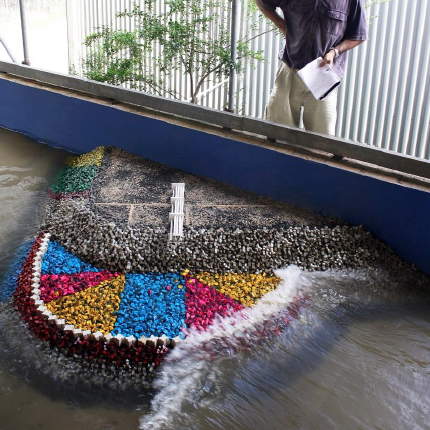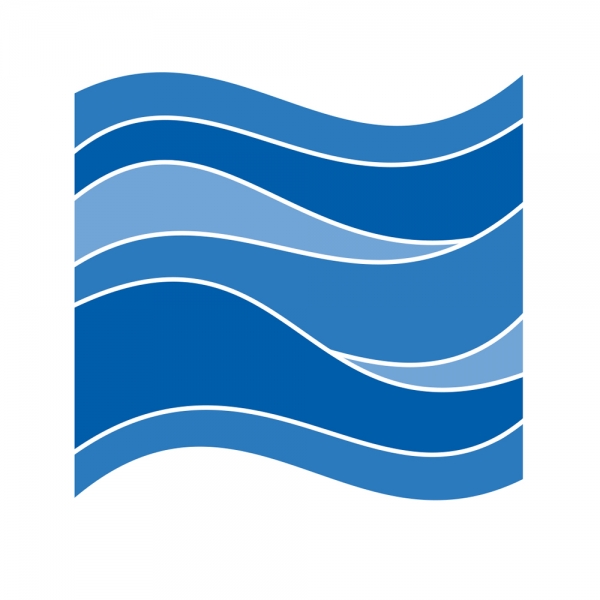3 m wave flume

The Water Research Laboratory’s 3 m wave flume is one of the largest flumes in Australia. It is 32 m long by 3 m wide by 1.3 m deep and has a level floor. The wave generating paddle occupies 3 m of flume length, giving a useable length of 29 m. Bathymetry is added (when required) by installing either a sand or plywood bed to the required slope.
The wave paddle is hydraulically powered and computer controlled. It can generate monochromatic (regular) and irregular waves to any standard spectrum, with typical wave periods being in the range 1 to 5 seconds. Subject to the required water depth and wave period, the 3 m flume can generate waves up to 0.4 m in height. This allows testing at full or near-full scale for sheltered waterways such as lake shores or riverbanks, and scales in the range of 1:5 to 1:10 for many open coast structures.
The size of the flume means that quasi three-dimensional tests of structures such as breakwater heads can be undertaken at large scale without the expense of a fully three-dimensional basin model.
-
- 3 m wide x 32 m long x 1.3 m deep
- One of the largest flumes in Australia
- Can generate waves up to 0.4 m in height
- Paddle type wave generator
- Monochromatic and irregular wave spectrums
- Quasi 3D tests of structures can be undertaken at large scale without the expense of a fully 3D basin model
The wave paddle is hydraulically powered and computer controlled. It can generate monochromatic (regular) and irregular waves to any standard spectrum, with typical wave periods being in the range 1 to 5 seconds. Subject to the required water depth and wave period, the 3 m flume can generate waves up to 0.4 m in height. This allows testing at full or near-full scale for sheltered waterways such as lake shores or riverbanks, and scales in the range of 1:5 to 1:10 for many open coast structures.
The size of the flume means that quasi three-dimensional tests of structures such as breakwater heads can be undertaken at large scale without the expense of a fully three-dimensional basin model.

